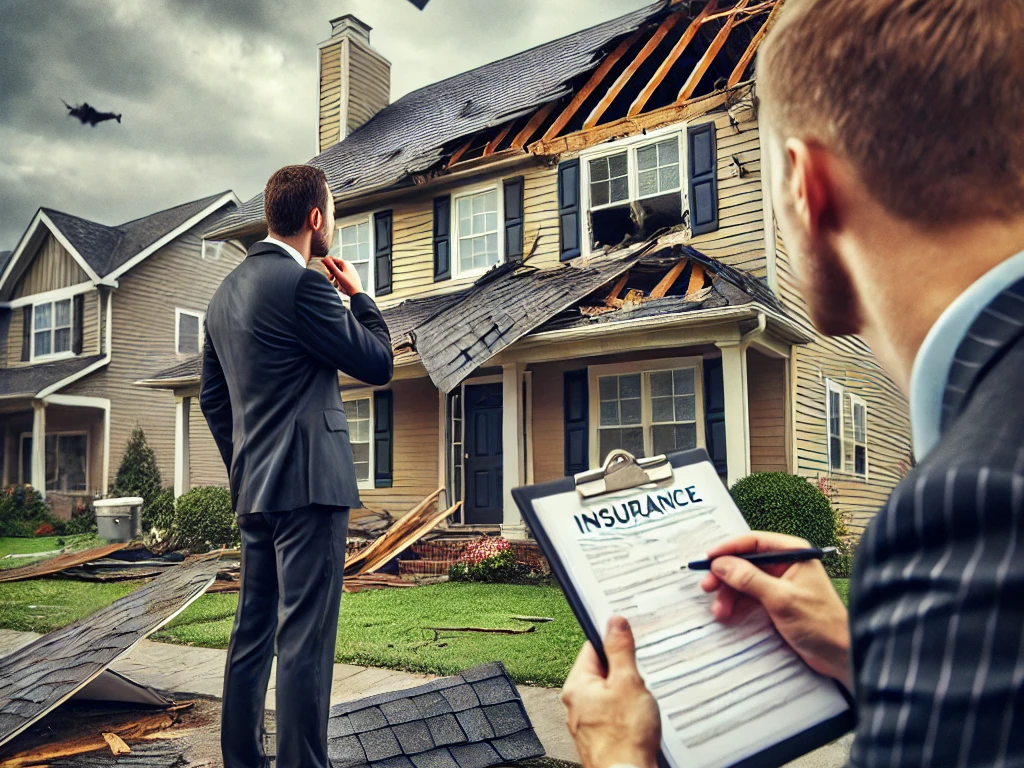Find out if your insurance will cover storm-related roof damage, what types of policies offer protection, and how to file a claim effectively.
Understanding whether your insurance will cover storm-related roof damage is crucial for homeowners. Severe weather can wreak havoc on roofs, leading to costly repairs. Knowing your coverage can save you from financial stress and ensure timely repairs.
What Constitutes Storm-Related Roof Damage?
Storm-related roof damage can vary significantly depending on the type of weather event. Common types include:
- Hail Damage: Hailstones can cause dents and break shingles.
- Wind Damage: Strong winds can lift, tear, or completely remove shingles.
- Rain Damage: Heavy rain can lead to leaks, especially if the roof is already compromised.
- Snow Damage: Accumulated snow can cause structural stress and leaks.
Identifying signs of damage early, such as missing shingles, dents, leaks, or sagging areas, is essential for timely repairs and successful insurance claims.
Types of Home Insurance Policies
Home insurance policies generally fall into two categories:
- Comprehensive Coverage Policies: These policies cover a wide range of perils unless specifically excluded.
- Named Perils Policies: These cover only the perils listed in the policy, such as fire, theft, or specific storm events.
Understanding the specifics of your policy is critical to knowing what is covered.
Comprehensive Coverage Policies
A comprehensive coverage policy offers broad protection. This means it will cover storm-related damage unless it is explicitly excluded. Such policies often provide peace of mind but come with higher premiums.
Named Perils Policies
Named perils policies are more restrictive. They only cover damage caused by events explicitly listed in the policy. Commonly covered perils include:
- Fire
- Theft
- Hail
- Windstorms
If your policy does not list storm-related events, you may need to add extra coverage.
Understanding Your Insurance Policy
Reading and understanding your insurance policy is vital. Key terms to look out for include:
- Deductibles: The amount you pay out-of-pocket before coverage kicks in.
- Exclusions: Specific conditions or perils not covered by the policy.
- Coverage Limits: The maximum amount the insurer will pay for a covered loss.
Filing an Insurance Claim for Storm Damage
After storm damage, take these steps to file a claim:
- Document the Damage: Take photos and videos of the damage immediately.
- Temporary Repairs: Make any necessary temporary repairs to prevent further damage.
- Contact Your Insurer: Report the damage as soon as possible.
- Provide Documentation: Submit all required forms and evidence of damage.
Insurance Adjusters and Their Role
Insurance adjusters assess the damage and determine the payout. They will inspect the roof, review your documentation, and provide an estimate of the repair costs. It’s crucial to cooperate fully and provide any additional information they may need.
Factors Affecting Claim Approval
Several factors influence whether a claim is approved or denied:
- Policy Terms: Ensure your policy covers the type of storm damage incurred.
- Extent of Damage: Minor damage may not meet the deductible threshold.
- Timeliness: Prompt reporting and repairs are critical.
Preventing Storm Damage
Preventive measures can minimize storm-related roof damage:
- Regular Inspections: Have your roof inspected annually.
- Maintenance: Keep gutters clean and trees trimmed.
- Quality Materials: Use durable materials suited to your climate.
Temporary Repairs vs. Permanent Repairs
After a storm, you might need temporary repairs to prevent further damage. Use tarps or plywood to cover exposed areas. Permanent repairs should be done by professionals to ensure longevity and proper insurance reimbursement.
Professional Roof Inspections
Professional inspections can uncover hidden damage and strengthen your claim. Inspectors provide detailed reports that are valuable for insurance purposes and ensuring all damage is accounted for.
Estimating Repair Costs
Accurate cost estimation involves:
- Assessing Damage: Identifying all areas affected.
- Getting Quotes: Obtain multiple quotes from reputable contractors.
- Considering Materials: Different materials have varying costs.
Deductibles and Out-of-Pocket Costs
Understanding deductibles is essential. This is the amount you must pay before your insurance covers the rest. Higher deductibles lower premiums but increase out-of-pocket costs during a claim.
Common Pitfalls in Filing Claims
Avoid these common mistakes:
- Delaying the Claim: Report damage immediately.
- Insufficient Documentation: Provide thorough evidence of damage.
- Ignoring Maintenance: Insurers may deny claims if neglect contributed to the damage.
Legal Aspects of Insurance Claims
Know your rights as a policyholder. If your claim is unjustly denied, you may need legal assistance. Understanding the legal aspects ensures you get the coverage you’re entitled to.
Impact of Claims on Future Premiums
Filing a claim can affect future premiums. Insurers may increase rates after a claim, especially if multiple claims are made. Consider the long-term impact before filing minor claims.
Insurance for Different Roof Types
Different roof types may have varying coverage specifics:
- Shingle Roofs: Commonly covered but may have higher deductibles for certain damage.
- Tile Roofs: Durable but expensive to repair, often fully covered.
- Metal Roofs: Highly resistant to storm damage, typically covered.
- Flat Roofs: Coverage may depend on specific materials and construction.
Rebuilding After Storm Damage
Rebuilding involves:
- Choosing Materials: Opt for durable, storm-resistant options.
- Hiring Contractors: Select experienced, licensed contractors.
- Permits and Inspections: Ensure all work complies with local codes.
Real-Life Case Studies
Examining real-life cases can provide valuable insights:
- Successful Claims: Learn from homeowners who navigated the process effectively.
- Unsuccessful Claims: Understand common reasons for denial and how to avoid them.
FAQs
Will my insurance cover hail damage?
Yes, most policies cover hail damage under storm-related perils.
What should I do immediately after storm damage?
Document the damage, make temporary repairs, and contact your insurer.
How long do I have to file a claim after storm damage?
It varies by insurer, but it’s best to file as soon as possible.
Can my claim be denied?
Yes, if the damage is not covered by your policy or if there is insufficient evidence.
How can I reduce future premiums?
Maintain your roof, avoid multiple claims, and consider higher deductibles.
Do I need a professional roof inspection for my claim?
While not always required, it can strengthen your claim and ensure all damage is noted.
Conclusion
Storm-related roof damage can be a significant financial burden, but understanding your insurance coverage can mitigate this. Be proactive in maintaining your roof, understand your policy, and know the steps to take when filing a claim. With the right knowledge, you can navigate the insurance process smoothly and ensure your home is protected.


